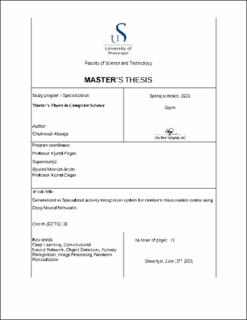| dc.description.abstract | Birth asphyxia is a global problem which has resulted in a high mortality rate of
newborn babies all over the globe, it is a newborn’s inability to establish breathing
at birth. A notable breakthrough is the marrying of medical technology with information technology in an attempt to tackle this global health problem. An example
of this is the Safer Births project which is focused on establishing technological
advancement to curb newborn deaths. In the year 2013, the Safer Births project
started and has till date gathered a lot of data captured during resuscitation sessions. The Haydom data used for the Safer Births project and additional data from
Nepal and SUS will be used with the aim of comparing a specialized and generalized
model trained on activity recognition system I3D and RGB stream excluding optical flow. With focus on only the newborn region, the reason for this is to simplify
the existing model. The experiment was conducted in view of the possibility of
achieving a system that can generalize or specialize with a combination of different
hospital data on some specific activities of interest namely Ventilation, Suction,
Stimulation. A new simplified pipeline, which is a reduction of the previous work
done by the saferbirth group, showed a very poor performance when generalized. | |
